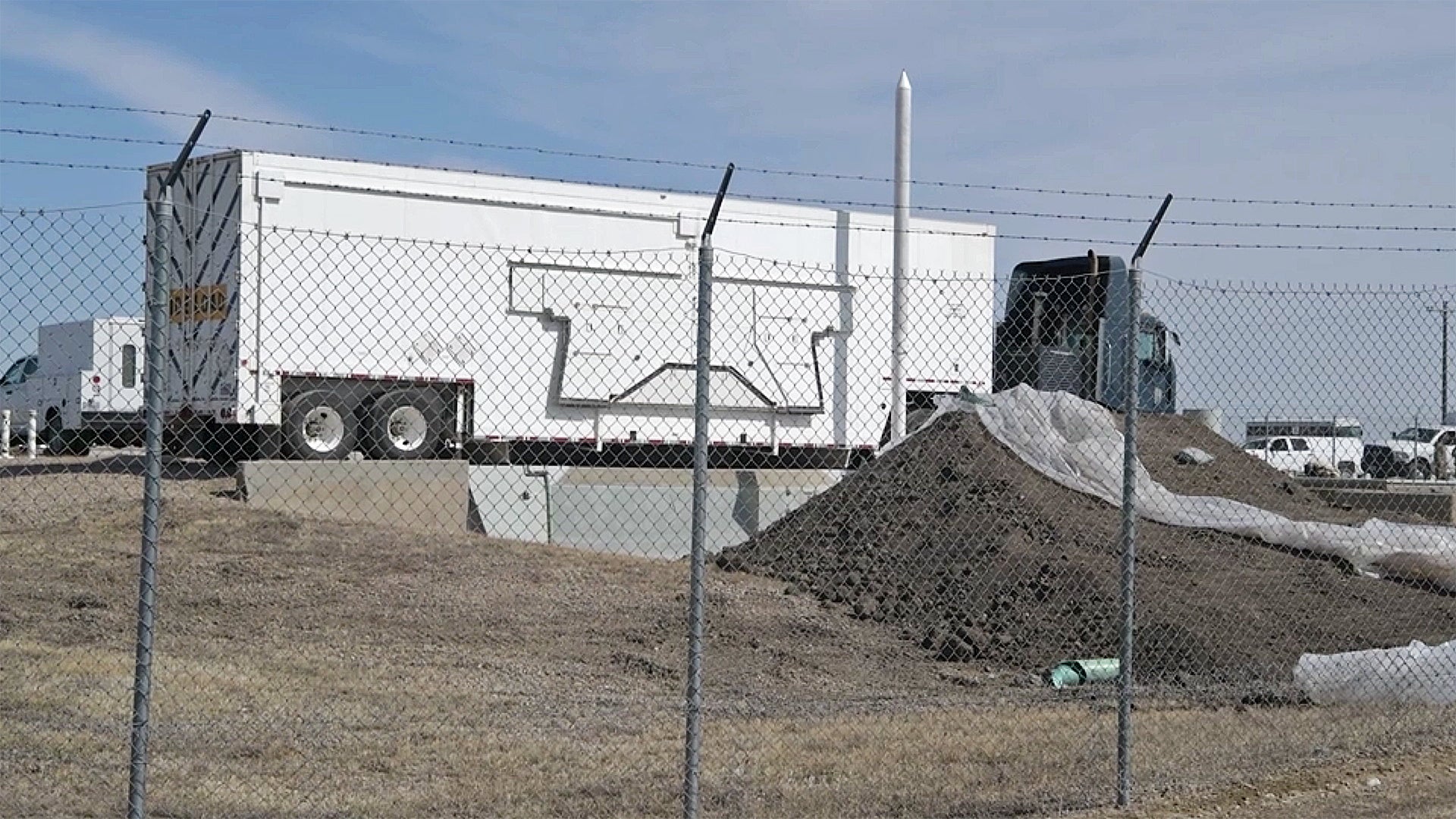The U.S. Air Force’s latest Minuteman III intercontinental ballistic missile system test at Minot Air Force Base, North Dakota, included a semi-truck parked over the silo, an added precaution to absolutely rule out an accidental launch. This seemingly crude measure is a routine part of these ICBM tests, codenamed Giant Pace, which evaluates the reliability of the land-based leg of the U.S. nuclear triad.
One of the most recent such tests, which are referred to as SELMs, standing for Simulated Electronic Launch-Minuteman III, was Giant Pace 21-1. This took place at Minot’s Golf 8 launch facility on April 7. These take place every two years and run through the whole process for readying an LGM-30G Minuteman III missile to fire, except for the actual launch. After the launch command is issued, the key in the launch control center is turned, and the door to the missile silo slides open. At that point, the exercise ends.

“During the SELM, we test everything but the actual flight of the missile,” said 1st Lieutenant Bobby Sarpong, a 741st Missile Squadron missile combat crew commander, in an Air Force release. “All the configurations are changed to capture information that lets us know the systems are working properly and would fire the missile in a real-world key turn.”
“The SELM is a significant event because it shows that everything, all the manpower, planning, and execution of the processes, plus all the components of the missile site, work as they should up to the point of the launch of a missile,” said MSgt Donald Nelson, the Noncommissioned Officer in Charge of the SELM.
Unsurprisingly, there’s a whole string of measures to ensure the safety of the SELM process, above all to prevent an accidental launch.
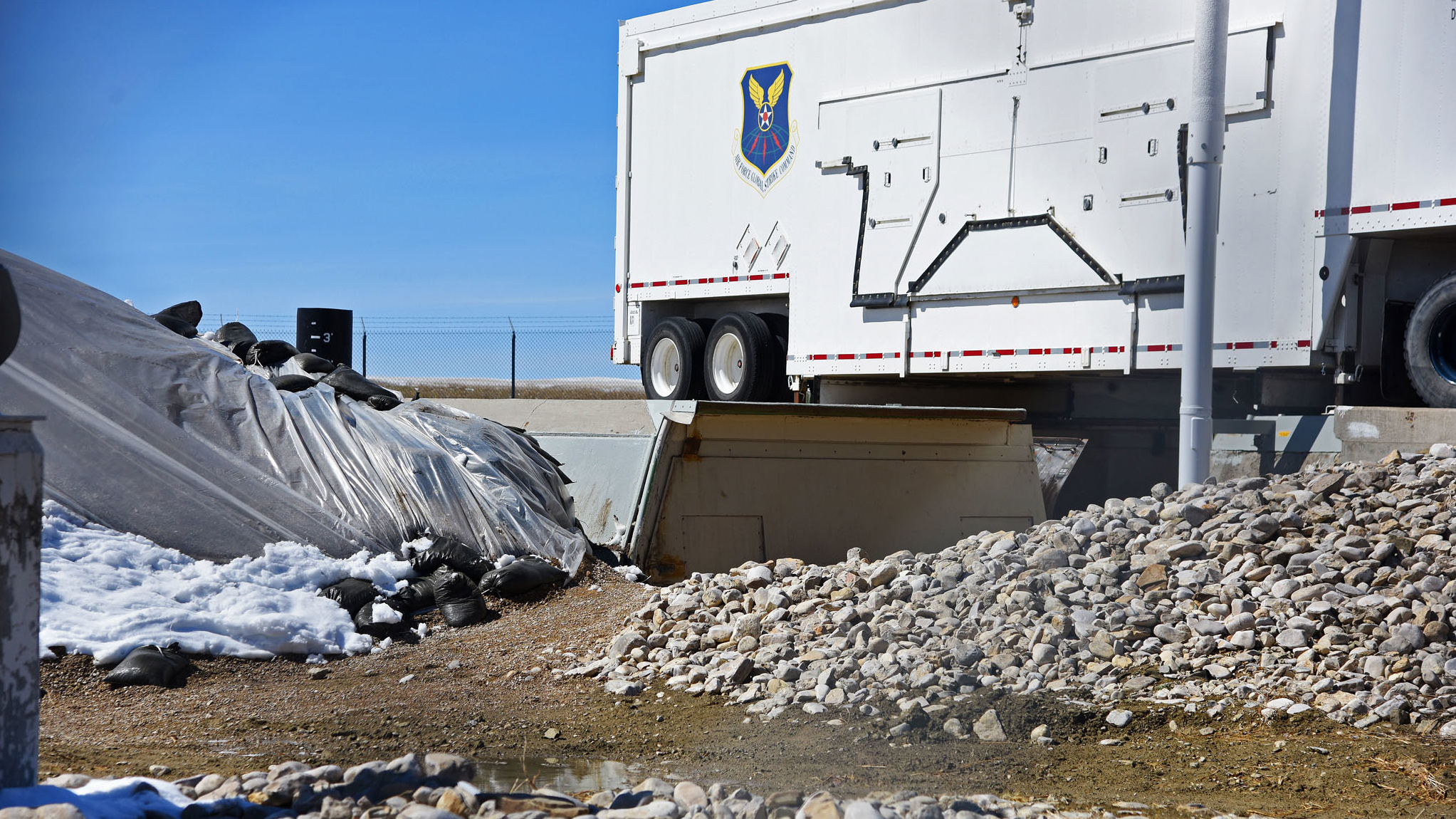
To start with, more than 1,500 hours are spent on each SLEM over a seven-month period, from initial planning and preparation through to the test itself.
Operational panels are replaced by test panels and the control and launch facilities that will host the test isolated from the others, forming what’s known as a “mini squadron.” In this way, real commands can be used in the exercise, without affecting the operational parts of the missile site.
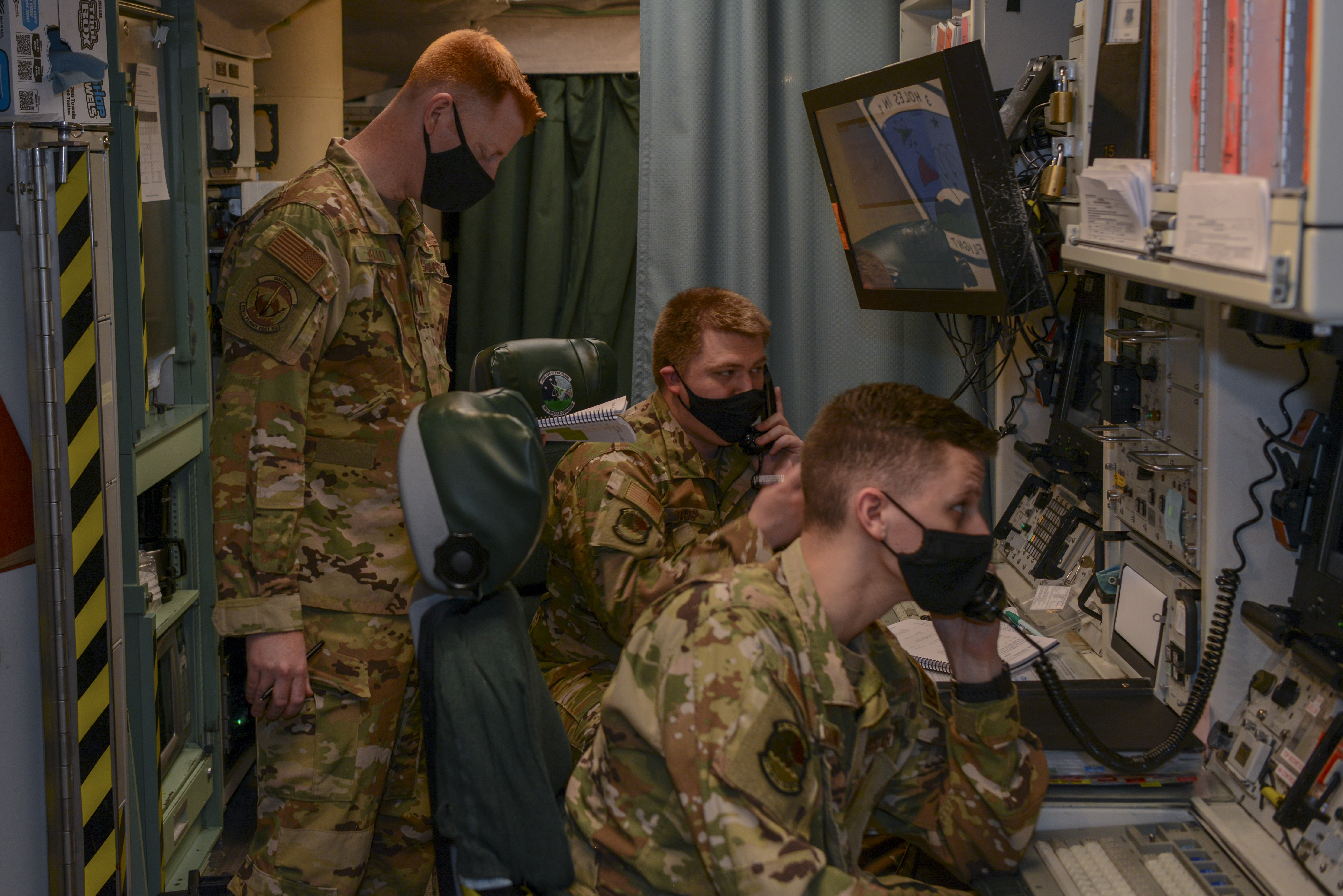
Thanks to this isolation, the commands sent will only reach the test launch facilities. Meanwhile, cables running to the missile’s ignition ordnance are disconnected and safing pins prevent the missiles’ first-stage motors from firing.
As well as testing the cables, communication devices, and mechanical instruments used to launch a missile, the SLEM also verifies the reliability of the Airborne Launch Control System (ALCS) that provides a survivable launch capability for the Minuteman III from onboard the U.S. Navy’s E-6B Mercury Airborne Command Post.
At the missile silo, a sand barrier is constructed to ensure that the silo’s blast door comes to a safe stop after being blown open. Blowing open the 100-ton door is a major event in itself, something that occurs only once in each of the biennial exercises.
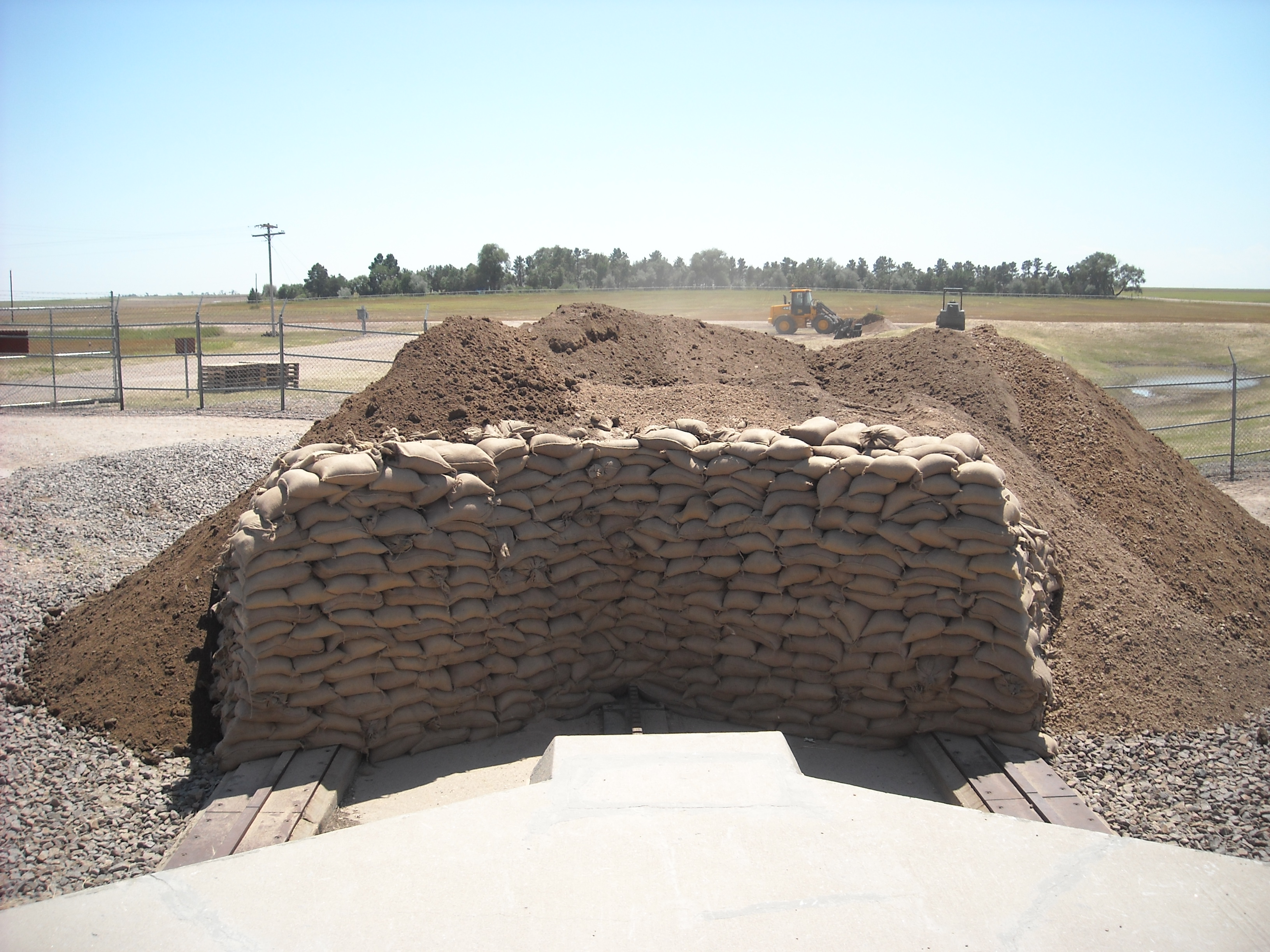
And then there’s the truck. Hans Kristensen, Director of the Nuclear Information Project at the Federation of American Scientists, wrote on Twitter that this vehicle is parked atop the silo as an additional security precaution.
Looking at photos of previous SELMs, the truck seems to be a regular fixture of these exercises. In case an ICBM was inadvertently launched it would presumably be demolished as soon as it impacted the vehicle, causing local destruction, but potentially preventing World War III or the mass death of innocents, regardless.
There is also at least one instance of something similar being done in an emergency context as an added precaution against an accidental launch of a Minuteman III from its silo.
In October 1984, Air Force officials parked an armored car on top of a Minuteman III silo at F. E. Warren Air Force Base in Wyoming after a computer malfunction lit up a warning light indicating that the missile was about to launch itself. “Security police did respond with a vehicle that was parked on the missile silo,” Major Fred Harrop, a Strategic Air Command spokesperson, told The Washington Post in 1987 after details of the incident emerged.
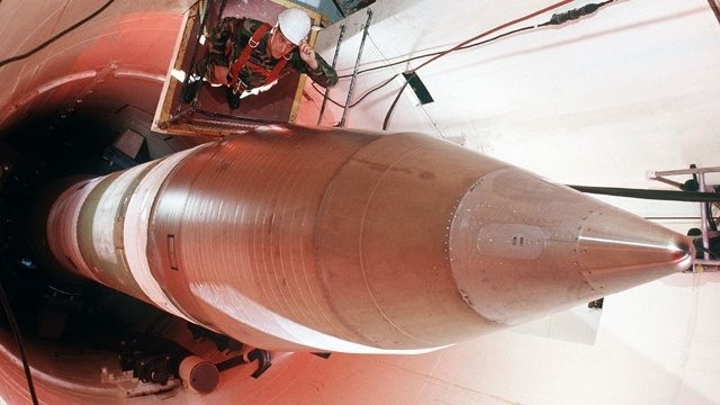
“This is an available precaution until the source of the erroneous light could be determined,” he continued. “There is absolutely no way a Minuteman 3 missile could be accidentally launched… There was never any possibility of an inadvertent launch as redundant safety measures exist to prevent such an occurrence.”
However, “Harrop could not explain why the Air Force took the precaution of driving a truck on top of the silo if there was no chance of a launch,” The Washington Post said in its 1987 story.
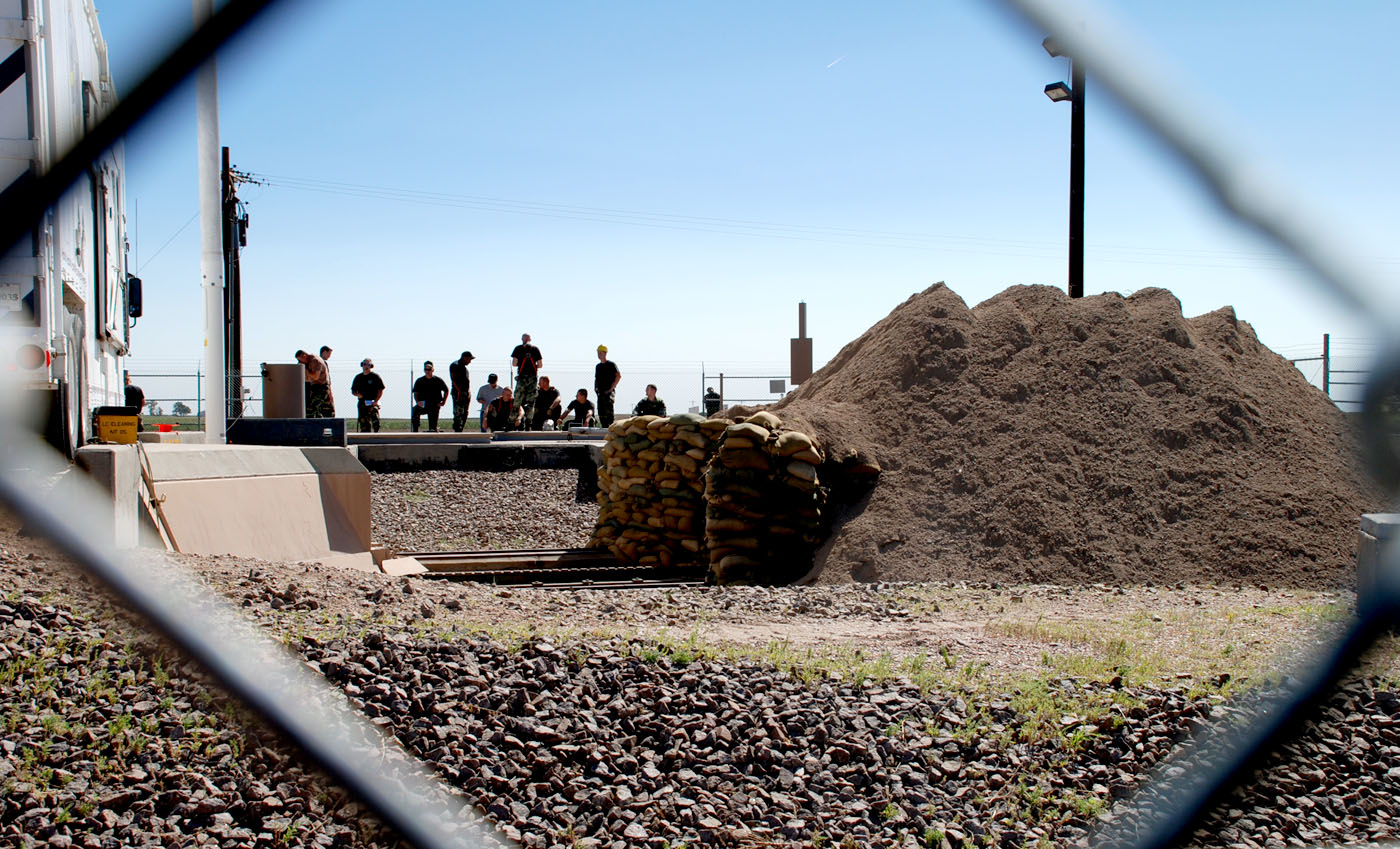
Placing the truck over the silo could also help ensure nothing falls into, which could have disastrous consequences, as much as to prevent a missile from leaving.
Beyond these worst-case-scenario practical applications, the simple routine of having a truck located over the silo surely serves to reassure the minds of those dealing with a live nuclear-armed ICBM, as well as providing a highly visible signal of the safety aspects at stake during the simulated launch process.
It should be noted that actual launch tests of the Minuteman III take place routinely, as well. These test launches are conducted from Vandenberg Air Force Base in California, primarily to provide performance data and using missiles without any live nuclear warheads. Operational units do not carry out any live-fire launches during training.
Regardless of the debate around the planned replacement of the Minuteman III, and the viability of Air Force ICBMs as a part of the nuclear deterrence strategy, it’s clear that tests of the existing system need to be as realistic as possible to confirm its functionality. The counterpoint to that realism is the level of safeguarding required to ensure nothing goes disastrously wrong, and it seems a truck parked over the top of the silo is an enduring feature of those safety measures.
Contact the author: thomas@thedrive.com
